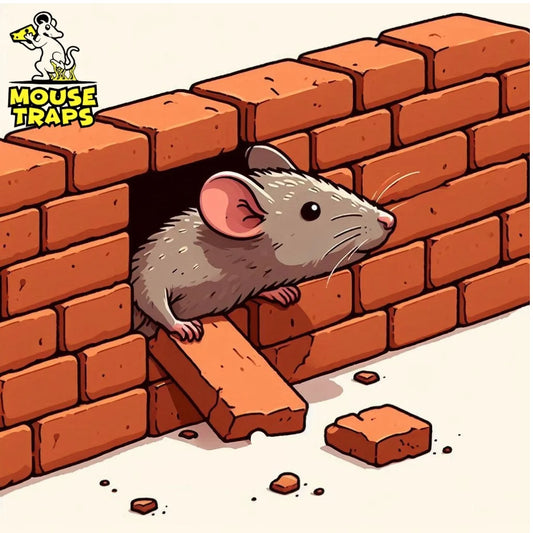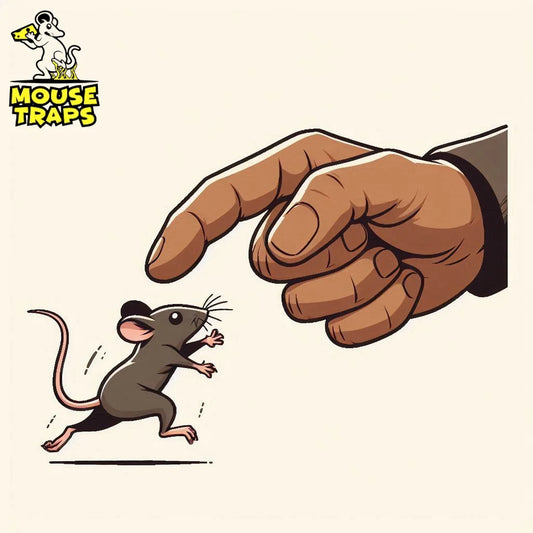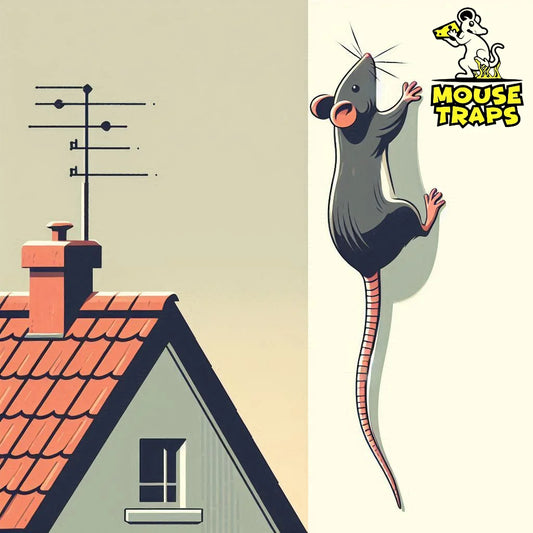Introduction:
Rats are creatures that can sneak into houses through tiny gaps, in the roof and eaves. When they get inside they can create havoc. Put the health of residents at risk. Luckily by taking steps you can keep rats from entering your home through these exposed points.
Prevention Methods:
Inspect for Entry Points:
- Start by visually inspecting the exterior of your home, paying close attention to the roofing and eaves.
- Check for any openings or crevices that rats might be able to slip. Common entry points include gaps around pipes, vents, and cables, as well as damaged roof shingles or soffits.
- Use a flashlight to illuminate dark areas and make it easier to spot any signs of rodent activity or entry points.

Seal Off Entry Points:
- Once you've identified potential entry points, use appropriate materials to seal them off. Steel wool, wire mesh, and metal flashing are effective options as rats cannot gnaw through them easily.
- Ensure that the materials are securely fastened in place using screws, nails, or construction adhesive to prevent rats from dislodging them.
- Pay special attention to areas where different building materials meet, as these junctions may create gaps that need to be sealed.

Trim Overhanging Branches:
- Rats are excellent climbers and can use overhanging branches to access your roof and eaves. Trim back any tree branches that are within six feet of your home to prevent rats from gaining easy access.
- Use pruning shears or a saw to carefully trim branches, ensuring they are cut back sufficiently to eliminate any potential pathways for rats.

Keep Eaves Clean:
- Remove any debris, leaves, or clutter from your eaves regularly to eliminate potential nesting sites and food sources for rats.
- Use a broom or leaf blower to clear out accumulated debris, paying close attention to corners and crevices where rats may hide.
- Make sure to install gutter guards to stop leaves and debris from piling up in your gutters as blocked gutters can draw rodents and give them a way to get onto your roof.

Install Rodent Deterrents:
- Consider installing ultrasonic devices or motion-activated lights near your eaves to deter rats from approaching your home.
- Ultrasonic devices emit high-frequency sound waves that are unpleasant to rodents but inaudible to humans, while motion-activated lights can startle and discourage rats from lingering in the area.
Secure Trash Bins:
- Ensure that your trash bins have tight-fitting lids that are secured in place to prevent rats from accessing them.
- Store trash bins away from the house and elevated off the ground if possible to make them less accessible to rats.
- Clean your trash bins regularly to remove any food residue or odors that could attract rats.

Maintain Good Yard Hygiene:
- Keep your yard clean and tidy by removing clutter, fallen fruit, and other potential food sources for rats.
- Avoid leaving pet food or bird feeders out overnight, as these can attract rats and other pests.
- Fix any leaky outdoor faucets or pipes to eliminate sources of standing water that rats may use for drinking.

Consider Professional Help:
- If you're dealing with a persistent rat problem or if you're unsure how to effectively seal off entry points, consider hiring a professional pest control service.
- An expert, in pest control could inspect your house meticulously pinpoint entry points and suggest actions to keep rats out.

Note:
After all these precaution if somehow rats enters in your territory then you should take it seriously and use traps to get rid of those rodent with and ease. As they can harm your property and your health as well. Live Mouse Traps and Sticky Glue Traps are most effective traps available in market for more details check this out;
Live Humane Trap:
A live humane trap is designed to capture rodents without harming them, allowing for their safe release back into the wild. Here are some details and benefits of using a live humane trap:

- Construction: Live humane traps are typically made of sturdy materials such as metal or durable plastic.
- Mechanism: These traps feature a trigger mechanism that closes the door once the rodent enters, securely trapping them inside.
- Ventilation: Many live traps have adequate ventilation to ensure the trapped rodents remain comfortable until they can be released.
- Size Variability: Live humane traps come in various sizes to accommodate different species of rodents, from mice to larger rats.
Benefits:
- Non-lethal: Live humane traps provide a humane alternative to traditional snap traps or poisons, allowing rodents to be captured without causing harm.
- Safe for Children and Pets: Since live traps do not use poisons or snap mechanisms, they pose minimal risk to children and pets.
- Reusability: Live traps can be reused multiple times, making them a cost-effective and environmentally friendly option for rodent control.
- Legal Compliance: In areas where regulations prohibit the use of lethal traps or poisons, live humane traps offer a legal method of rodent control.
- Ethical Considerations: Using live traps aligns with ethical principles of compassion and respect for all living creatures, allowing rodents to be captured and released unharmed.
Sticky Glue Trap:
Sticky glue traps, also known as glue boards or glue traps, are designed to capture rodents by immobilizing them on a sticky adhesive surface. Here are some details and benefits of using a sticky glue trap:
Click Here To Buy Sticky Pad Traps

- Construction: Sticky glue traps consist of a flat board or sheet coated with a strong adhesive that traps rodents upon contact.
- Disposable: Once a rodent is caught on a sticky glue trap, the entire trap is typically disposed of, as the adhesive cannot be cleaned off easily.
- Non-toxic: Sticky glue traps do not contain poisons or chemicals, making them a safer option for households with children and pets.
- Size Variability: Sticky glue traps come in various sizes to accommodate different types of rodents, from mice to larger rats.
Benefits:
- Easy to Use: Sticky glue traps require minimal setup and maintenance, simply place them in areas where rodent activity is observed.
- Cost-effective: Sticky glue traps are relatively inexpensive compared to other types of rodent control methods, making them accessible for budget-conscious consumers.
- No Escape: Once a rodent is caught on a sticky glue trap, there is no chance of escape, ensuring effective capture.
- Versatility: Sticky glue traps can be used in a variety of locations, including homes, businesses, and agricultural settings, making them a versatile option for rodent control.
Conclusion:
Keeping rats out of your house by checking for openings, in the roof. Eaves takes effort and proactive steps. Make sure to inspect for entry points seal off any gaps keep your home clean and use deterrents to safeguard against rat invasions and protect your family's safety and health.




